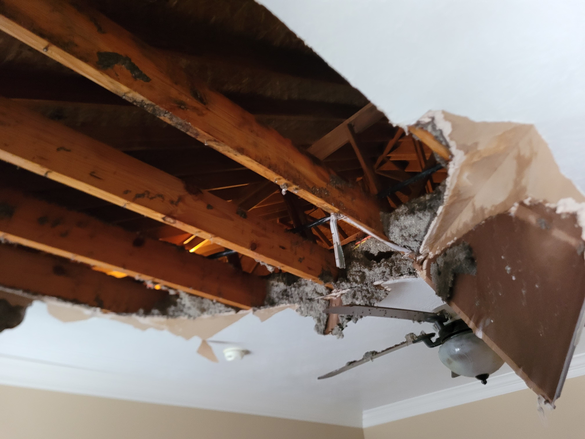|
As I write this Texas is just starting to get most of its power back. Fingers are being pointed all over the place - Republicans are blaming wind turbines, Democrats are blaming natural gas, consumers are blaming utilities and the grid manager ERCOT, some pundits are blaming Texas’ unusual market based grid, but meanwhile everyone is miserable. I’m reminded of Scotty in all of the Star Trek iterations exclaiming with a heavy Scottish brogue “I’m giving her all she’s got captain!” Somehow they always patched the ship together before it blew up, but the Texas grid was not so lucky. The truth of the matter is that the Texas grid is a machine that was pushed well beyond anything it was designed for, and it broke. Badly. In almost every way. For a clear eyed view check out Jesse Jenkins’ tweets from 2/14-2/18. Health Consequences Obviously grid stability is not the usual focus of my writing here. (That said, I listen to and have been on the cleantech podcast The Energy Gang, and am part of #energytwitter.) Unfortunately, the grid is not the only thing that blew up, water lines everywhere are bursting because homes are seeing temperatures they’ve never seen before, combined with heat being out. This is worsening an already bad situation and will make for a lot of cleanup and likely future mold issues. Here’s a photo of a ceiling destroyed by a burst pipe courtesy of HVAC 2.0 contractor Dustin Cole in Lake Charles, Louisiana, which is also experiencing freezing pipes: Even sadder is that carbon monoxide poisoning is happening on an unprecedented scale as homeowners are trying to find some way to heat their homes. How do we prevent this from happening again? The fix looks remarkably like the future we’re moving towards. The Fix is the Future If the root of the multiple failures in Texas is systems (both the grid and buildings) being pushed well beyond what they were designed for, then the fix is increasing their resilience. Renewable energy costs have fallen precipitously over the last decade, solar is down 89% for example. Very shortly (if not already), renewable energy is going to be the cheapest energy source man has ever known - it doesn’t require fuel! These economics are becoming obvious in “interconnection queues” or what’s planned by utilities to be built in the next few years. New England’s queue is 95% renewables now, mainly because of economics. Many grids are over 80%. So clean energy is coming. The same argument can be made for tighter and better insulated homes as the 2015 IECC code now requires blower door testing and passing to either 3 air changes per hour at 50 pascals in colder climates or 5 ACH50 in milder ones. The future is better homes. Back to Texas and the electric grid in general, the way to reduce the risk of a repeat looks a lot like what we just discussed:
Home Value Energy use is not transparent at resale, so there isn’t an easy way to understand if a house is an energy pig or a miser. Say a house costs $100/mo less than its comps to operate, shouldn’t it be worth some portion of that $100/month extra at resale? Running present value on $100 a month translates to between $5-25K. But that value isn't recognized in the real estate market because it's not measured. Until that changes our American tendency to move often prevents most from upgrading their homes because they a) don’t see the value and b) won’t get extra when they sell. The first is a sales and marketing problem, the second is a real estate market problem. With HVAC 2.0 we are working to solve for the first, but the second will take a coalition. Access to Wholesale Markets Right now consumers can’t participate in wholesale markets. Electricity costs vary wildly (Texas is currently pegged at $9/kwh when $.5-.10 is normal, and at night can even be free), so there is a lot of value in being able to limit those price spikes. If you have solar on your home, or you buy electricity from a community solar farm, you can benefit from buying electricity when it is cheaper. If you have a battery you can buy when it’s cheaper and sell back when it’s more expensive, plus the power company could pay you for a number of services the grid needs. That value can help pay for or entirely pay for solar or batteries. The trouble is right now none of that can happen, consumers can’t access wholesale markets. There’s a possibility now that the FERC 2222 order is out, you’ll have to Google it. The Depressing Reality, Then Some Hope It’s depressing, but until economic shifts happen like energy disclosure at resale and allowing consumers to participate in grid economics, dramatic failures like Texas’ grid around Valentine’s Day and California’s grid in last August’s heat wave are likely to continue. To repeat my early point too, we really can't expect the grid to weather circumstances so far outside of what it was designed for. There's a reason the grid is built at the current size - it balances cost with what's likely to happen. The grid would be unaffordable if we built it to withstand the toughest scenarios. So to some degree we need to prepare our buildings for multiple day outages in extreme circumstances, which we know how to do. At the residential level, that looks like retrofitting existing homes to be tighter with more efficient HVAC, the HVAC 2.0 program is literally built to deliver that. More levers will need to be thrown than the ones I discussed, but the more we can do to make the future of our energy grid and energy system economic, the faster we can solve this. What are you going to help with? |
AuthorNate Adams is fiercely determined to get feedback on every project to learn more about what works and what doesn't. This blog shows that learning process. |
ServicesCompany |
Buy The Home Comfort Book!
© COPYRIGHT 2017. ALL RIGHTS RESERVED.
|
 RSS Feed
RSS Feed


